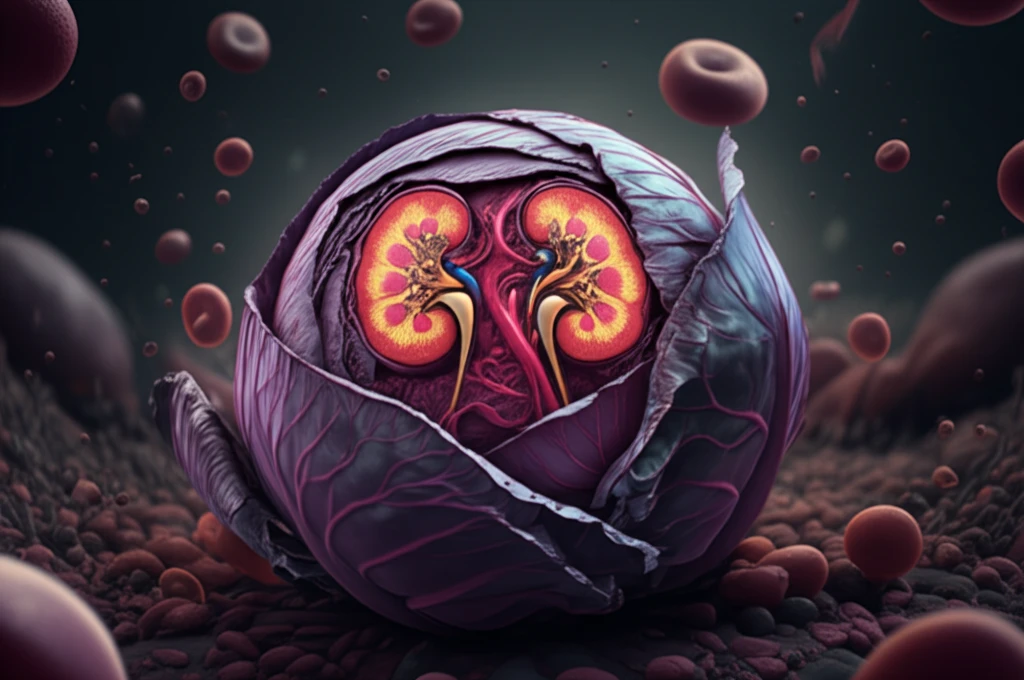
Red Cabbage: The Unlikely Kidney Protector?
"Discover how anthocyanins in red cabbage can fight kidney damage and boost your health, naturally."
In the quest for natural health solutions, certain humble vegetables stand out, offering benefits far beyond basic nutrition. Red cabbage, with its vibrant color and earthy flavor, is one such powerhouse. Often overlooked in favor of its green counterparts, red cabbage boasts a high concentration of anthocyanins, potent antioxidants linked to a range of health benefits.
Emerging research suggests that these anthocyanins may play a significant role in protecting kidney health. Kidneys, essential for filtering waste and maintaining overall balance in the body, are vulnerable to damage from oxidative stress and various toxins. The antioxidant properties of anthocyanins found in red cabbage could offer a natural defense against such threats.
This article explores the science behind red cabbage's potential kidney-protective effects, drawing from recent studies and insights. We will delve into how anthocyanins combat oxidative stress, and the implications this has for maintaining healthy kidney function. Whether you're proactively seeking natural ways to support your health or simply curious about the hidden benefits of everyday foods, this exploration into the power of red cabbage promises to be enlightening.
Unlocking Anthocyanins: The Science of Red Cabbage and Kidney Health

The key to red cabbage's potential kidney-protective properties lies in its high concentration of anthocyanins. These plant pigments, responsible for the vibrant red and purple hues in many fruits and vegetables, are powerful antioxidants. Antioxidants work by neutralizing free radicals, unstable molecules that can cause cellular damage and contribute to inflammation and disease.
- Extraction Optimization: The most effective extraction method combined 96% ethanol with 3% citric acid, yielding the highest anthocyanin content and antioxidant activity.
- Study Design: Rats were divided into groups to test the effects of red cabbage extract against induced kidney damage.
- Key Intervention: Gentamicin and captopril were used to induce kidney damage, followed by treatment with red cabbage extract.
- Measurements: Kidney function was assessed by measuring serum creatinine and blood urea levels.
Embrace the Power of Red Cabbage
The findings from this study offer promising insights into the potential of red cabbage, specifically its anthocyanin content, as a natural aid for kidney health. While further research is always valuable, incorporating red cabbage into your diet may be a proactive step towards supporting overall well-being. Whether enjoyed raw in salads, cooked in stir-fries, or fermented into sauerkraut, this vibrant vegetable offers a delicious and accessible way to harness the power of nature's antioxidants. Remember, a balanced diet rich in diverse fruits and vegetables is a cornerstone of good health, and red cabbage can be a valuable addition to that foundation.
